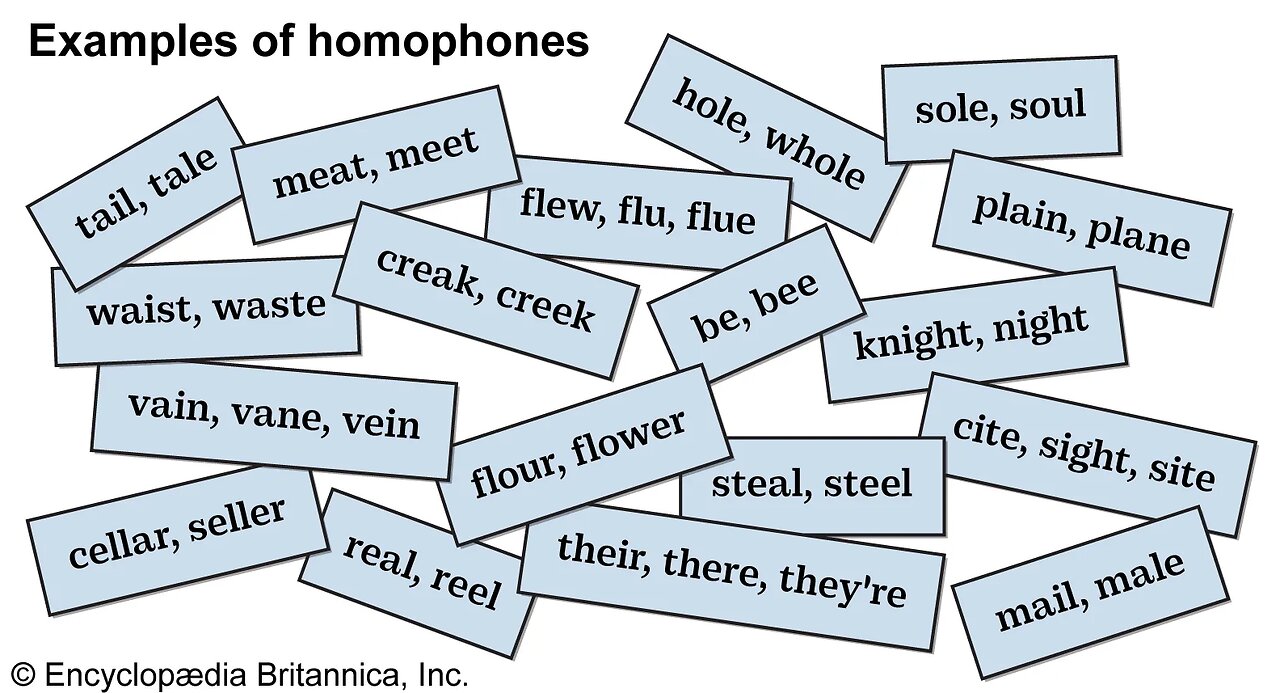Premium Only Content

TO vs. TOO vs. TWO: How-to Use : Homophones Made Easy: TO vs. TOO vs. TWO
TO vs. TOO vs. TWO: How-to Use : Homophones Made Easy: TO vs. TOO vs. TWO
Homophones are words in the English language that sound the same when spoken but have different meanings and often different spellings. They can be a bit tricky, especially for students learning English as a second language, but understanding them is important for clear communication. Here's a more detailed explanation:
1. Sound the Same: Homophones are words that are pronounced in the same way, or they have very similar pronunciations. This means that when you say them out loud, they sound identical, even though they may be spelled differently.
2. Different Meanings: Despite sounding the same, homophones have different meanings. Each word has its own unique definition and usage in sentences. This is why it's crucial to understand which homophone to use in a particular context to convey the intended meaning.
3. Different Spellings: Homophones are often spelled differently from each other. In some cases, the spelling may be quite similar, but there are usually subtle differences. These differences in spelling are what distinguish one homophone from another.
4. Common Examples: Homophones are common in the English language. Some well-known examples include "there," "their," and "they're," which all sound the same but have different meanings and spellings.
5. Context Matters: To choose the correct homophone in a sentence, you need to consider the context or the words around it. Understanding the context helps you determine which homophone is appropriate to convey the intended message.
6. Practice is Key: Learning homophones can be challenging, but with practice and exposure to the language, you can become proficient at using them correctly. Reading, listening, and speaking in English are all helpful ways to improve your understanding of homophones.
7. Common Homophones: There are many sets of homophones in English, such as "to," "too," and "two," "its" and "it's," "your" and "you're," "where" and "wear," and many more. Each set has distinct meanings and uses.
8. Clear Communication: Understanding and using homophones correctly is essential for clear and effective communication in English. Using the wrong homophone in a sentence can lead to misunderstandings, so it's important to pay attention to these words.
In summary, homophones are words in English that sound the same but have different meanings and spellings. Learning to distinguish and use them correctly is an important aspect of improving your English language skills, especially for those studying English as a second language. Practice and exposure to the language will help you become more confident in using homophones in your writing and speaking.
-
 2:15:24
2:15:24
Matt Kohrs
11 hours agoStock Market Squeeze: Gov'nt Shutdown Ends, Stimulus Checks & Breaking News || Live Day Trading
51.8K7 -
 LIVE
LIVE
LFA TV
14 hours agoLIVE & BREAKING NEWS! | MONDAY 11/10/25
4,485 watching -
 LIVE
LIVE
Caleb Hammer
2 hours agoI Confronted The Governor Of Michigan | Financial Audit
225 watching -
 28:45
28:45
Rethinking the Dollar
1 hour agoThey Want You To Stay Broke: 50‑Year Mortgages, Tariffs & Debt Traps
22.4K2 -

The Big Mig™
4 hours agoInsider Trader Of The Year Award Goes To Nancy Pelosi
16.3K7 -
 1:03:54
1:03:54
Graham Allen
3 hours agoIs the Shutdown FINALLY ending!?! What was the deal?? + 50 Years Mortgages, $2K checks and More!!
115K82 -
 LIVE
LIVE
Badlands Media
14 hours agoBadlands Daily: November 10, 2025
2,222 watching -
 2:55:05
2:55:05
Wendy Bell Radio
7 hours agoSchumer's Shutdown Ends With Democrats Getting Nothing
66K99 -
 1:07:40
1:07:40
Chad Prather
23 hours agoHow to Rise Again: Finding Life in the Garden of the Empty Tomb
79.7K56 -
 24:21
24:21
It’s the Final Round
11 hours ago $9.69 earnedNBA Best Bets & Player Props | Full Analysis & Predictions, FREE Today (Monday 11/10) Nov 10th
38K1